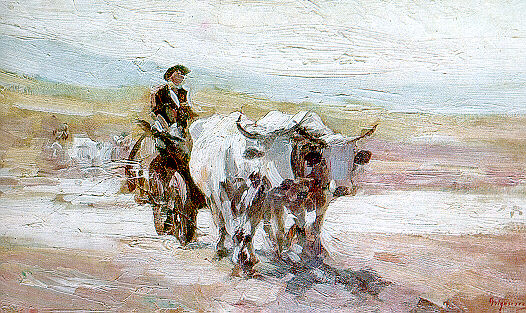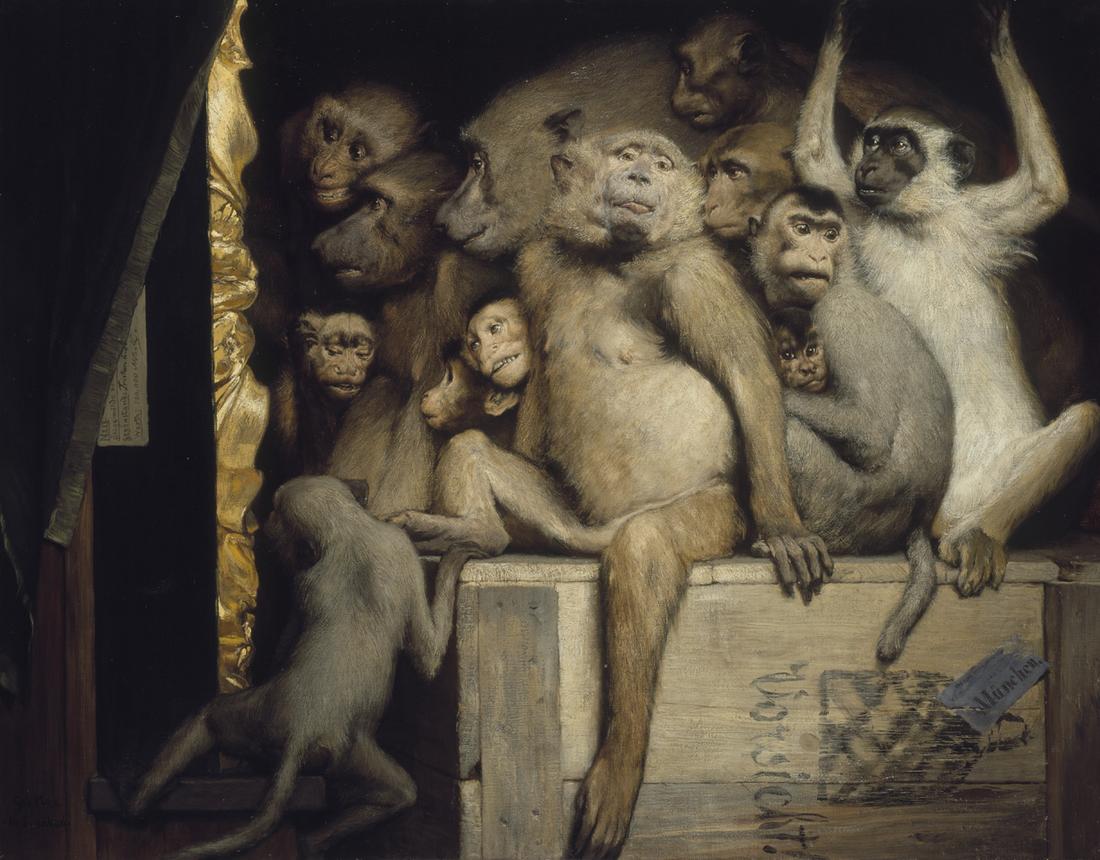|
Nicolae Tonitza
Nicolae Tonitza (; April 13, 1886 – February 27, 1940) was a Romanian painter, engraver, lithographer, journalist and art critic. Drawing inspiration from Post-impressionism and Expressionism, he had a major role in introducing modernist guidelines to local art. Biography Born in Bârlad, he left his home town in 1902 in order to attend the Iași National School of Fine Arts, where he had among his teachers Gheorghe Popovici and Emanoil Bardasare.Șorban, p.73 The following year he visited Italy together with University of Bucharest students of archeology under the direction of Grigore Tocilescu. During that period, together with some of his fellow students, Tonitza painted the walls of Grozești church. In 1908 he left for Munich, where he attended the Royal Academy of Fine Arts; he began publishing political cartoons in '' Furnica'', and contributing art criticism articles to ''Arta Română''. Tonitza spent the following three years in Paris, where he visited art ... [...More Info...] [...Related Items...] OR: [Wikipedia] [Google] [Baidu] |
Bârlad
Bârlad () is a city in Vaslui County, Romania. It lies on the banks of the river Bârlad, which waters the high plains of Western Moldavia. At Bârlad the railway from Iași diverges, one branch skirting the river Siret, the other skirting the Prut; both reunite at Galați. Along with a maze of narrow and winding streets, Bârlad features several notable modern buildings, including the hospital administered by the Saint Spiridion Foundation of Iași. In the vicinity of the city are the ruins of a Roman camp. The city is the birthplace of Romanian ''Domnitor'' (Ruler) and diplomat Alexandru Ioan Cuza. Etymology Scholars continue to debate the origin of the city's name. The Hypatian Codex mentions a market town called ''Berlad'', and some historians, influenced by a document Bogdan Petriceicu Hasdeu published in the 19th century, have tried to link this town and its inhabitants (variously considered Romanians, East Slavs or an amalgam) with the Moldavian Bârlad. Ioan Bogdan d ... [...More Info...] [...Related Items...] OR: [Wikipedia] [Google] [Baidu] |
Art Of Romania
Romanian art consists of the visual and plastic arts (including Romanian architecture, woodwork, textiles, and ceramics) originating from the geographical area of Romania. The production of art in Romania is as old as the Paleolithic, an example being a cave painting from the Cuciulat Cave (Sălaj County). During the Neolithic, multiple cultures lived on the modern territory of Romania. Their material culture included pottery and abstract clay statuettes decorated with geometric patterns. These may give hints on the way these civilizations used to dress and maybe tattoo. A good examples of this is the Thinker of Hamangia, a clay figurine produced by the Hamangia culture. Important cultures of the Neolithic era include Starčevo–Körös–Criș, Boian, Gumelnița–Karanovo, and other ones, the most famous and at the same time the most evolved among them in art being the Cucuteni–Trypillia culture. During Antiquity, the Geto-Dacians produced art and built multiple cities o ... [...More Info...] [...Related Items...] OR: [Wikipedia] [Google] [Baidu] |
Moldavia
Moldavia ( ro, Moldova, or , literally "The Country of Moldavia"; in Romanian Cyrillic: or ; chu, Землѧ Молдавскаѧ; el, Ἡγεμονία τῆς Μολδαβίας) is a historical region and former principality in Central and Eastern Europe, corresponding to the territory between the Eastern Carpathians and the Dniester River. An initially independent and later autonomous state, it existed from the 14th century to 1859, when it united with Wallachia () as the basis of the modern Romanian state; at various times, Moldavia included the regions of Bessarabia (with the Budjak), all of Bukovina and Hertsa. The region of Pokuttya was also part of it for a period of time. The western half of Moldavia is now part of Romania, the eastern side belongs to the Republic of Moldova, and the northern and southeastern parts are territories of Ukraine. Name and etymology The original and short-lived reference to the region was ''Bogdania'', after Bogdan I, the fo ... [...More Info...] [...Related Items...] OR: [Wikipedia] [Google] [Baidu] |
Fresco
Fresco (plural ''frescos'' or ''frescoes'') is a technique of mural painting executed upon freshly laid ("wet") lime plaster. Water is used as the vehicle for the dry-powder pigment to merge with the plaster, and with the setting of the plaster, the painting becomes an integral part of the wall. The word ''fresco'' ( it, affresco) is derived from the Italian adjective ''fresco'' meaning "fresh", and may thus be contrasted with fresco-secco or secco mural painting techniques, which are applied to dried plaster, to supplement painting in fresco. The fresco technique has been employed since antiquity and is closely associated with Italian Renaissance painting. The word ''fresco'' is commonly and inaccurately used in English to refer to any wall painting regardless of the plaster technology or binding medium. This, in part, contributes to a misconception that the most geographically and temporally common wall painting technology was the painting into wet lime plaster. Even in appar ... [...More Info...] [...Related Items...] OR: [Wikipedia] [Google] [Baidu] |
Henri Matisse
Henri Émile Benoît Matisse (; 31 December 1869 – 3 November 1954) was a French visual artist, known for both his use of colour and his fluid and original draughtsmanship. He was a draughtsman, printmaker, and sculptor, but is known primarily as a painter. Matisse is commonly regarded, along with Pablo Picasso, as one of the artists who best helped to define the revolutionary developments in the visual arts throughout the opening decades of the twentieth century, responsible for significant developments in painting and sculpture. The intense colourism of the works he painted between 1900 and 1905 brought him notoriety as one of the Fauves ( French for "wild beasts"). Many of his finest works were created in the decade or so after 1906, when he developed a rigorous style that emphasised flattened forms and decorative pattern. In 1917, he relocated to a suburb of Nice on the French Riviera, and the more relaxed style of his work during the 1920s gained him critical acclaim ... [...More Info...] [...Related Items...] OR: [Wikipedia] [Google] [Baidu] |
Paris
Paris () is the capital and most populous city of France, with an estimated population of 2,165,423 residents in 2019 in an area of more than 105 km² (41 sq mi), making it the 30th most densely populated city in the world in 2020. Since the 17th century, Paris has been one of the world's major centres of finance, diplomacy, commerce, fashion, gastronomy, and science. For its leading role in the arts and sciences, as well as its very early system of street lighting, in the 19th century it became known as "the City of Light". Like London, prior to the Second World War, it was also sometimes called the capital of the world. The City of Paris is the centre of the Île-de-France region, or Paris Region, with an estimated population of 12,262,544 in 2019, or about 19% of the population of France, making the region France's primate city. The Paris Region had a GDP of €739 billion ($743 billion) in 2019, which is the highest in Europe. According to the Economist Intelli ... [...More Info...] [...Related Items...] OR: [Wikipedia] [Google] [Baidu] |
Art Criticism
Art criticism is the discussion or evaluation of visual art. Art critics usually criticize art in the context of aesthetics or the theory of beauty. A goal of art criticism is the pursuit of a rational basis for art appreciation but it is questionable whether such criticism can transcend prevailing socio-political circumstances. The variety of artistic movements has resulted in a division of art criticism into different disciplines which may each use different criteria for their judgements. The most common division in the field of criticism is between historical criticism and evaluation, a form of art history, and contemporary criticism of work by living artists. Despite perceptions that art criticism is a much lower risk activity than making art, opinions of current art are always liable to drastic corrections with the passage of time. Critics of the past are often ridiculed for dismissing artists now venerated (like the early work of the Impressionists). Some art movements th ... [...More Info...] [...Related Items...] OR: [Wikipedia] [Google] [Baidu] |
Editorial Cartoon
A political cartoon, a form of editorial cartoon, is a cartoon graphic with caricatures of public figures, expressing the artist's opinion. An artist who writes and draws such images is known as an editorial cartoonist. They typically combine artistic skill, hyperbole and satire in order to either question authority or draw attention to corruption, political violence and other social ills. Developed in England in the latter part of the 18th century, the political cartoon was pioneered by James Gillray, although his and others in the flourishing English industry were sold as individual prints in print shops. Founded in 1841, the British periodical ''Punch'' appropriated the term ''cartoon'' to refer to its political cartoons, which led to the term's widespread use. History Origins The pictorial satire has been credited as the precursor to the political cartoons in England: John J. Richetti, in ''The Cambridge history of English literature, 1660–1780'', states that "Engl ... [...More Info...] [...Related Items...] OR: [Wikipedia] [Google] [Baidu] |
Munich
Munich ( ; german: München ; bar, Minga ) is the capital and most populous city of the States of Germany, German state of Bavaria. With a population of 1,558,395 inhabitants as of 31 July 2020, it is the List of cities in Germany by population, third-largest city in Germany, after Berlin and Hamburg, and thus the largest which does not constitute its own state, as well as the List of cities in the European Union by population within city limits, 11th-largest city in the European Union. The Munich Metropolitan Region, city's metropolitan region is home to 6 million people. Straddling the banks of the River Isar (a tributary of the Danube) north of the Northern Limestone Alps, Bavarian Alps, Munich is the seat of the Bavarian Regierungsbezirk, administrative region of Upper Bavaria, while being the population density, most densely populated municipality in Germany (4,500 people per km2). Munich is the second-largest city in the Bavarian dialects, Bavarian dialect area, ... [...More Info...] [...Related Items...] OR: [Wikipedia] [Google] [Baidu] |
Grozești, Iași
Grozești is a commune in Iași County, Western Moldavia, Romania Romania ( ; ro, România ) is a country located at the crossroads of Central Europe, Central, Eastern Europe, Eastern, and Southeast Europe, Southeastern Europe. It borders Bulgaria to the south, Ukraine to the north, Hungary to the west, S .... It is composed of three villages: Colțu Cornii, Grozești and Sălăgeni. References * {{DEFAULTSORT:Grozesti, Iasi Communes in Iași County Localities in Western Moldavia Populated places on the Prut ... [...More Info...] [...Related Items...] OR: [Wikipedia] [Google] [Baidu] |
Grigore Tocilescu
Grigore George Tocilescu (26 October 1850 – 18 September 1909) was a Romanian historian, archaeologist, epigrapher and folkorist, member of Romanian Academy. He was a professor of ancient history at the University of Bucharest, author of Marele Dicționar Geografic al României (The Great Geographical Dictionary of Romania), general secretary of the Romanian Ministry of Teaching and multiple times senator, with conservative political views. Tocilescu is one of the first Romanian historians who focused on the study of civilizations in ancient Dacia. As a folklorist he collaborated on the publication of a folkloristics compendium. Life Education After finishing the primary and secondary school Ploieşti, Tocilescu went to Bucharest where he graduated at the Saint Sava National College. He then studied in universities in Prague and Vienna, where he obtained the Doctor of Philosophy title and the license to practice law. Back in Romania, in 1881 he became professor of ancie ... [...More Info...] [...Related Items...] OR: [Wikipedia] [Google] [Baidu] |


.jpg)



.jpg)
